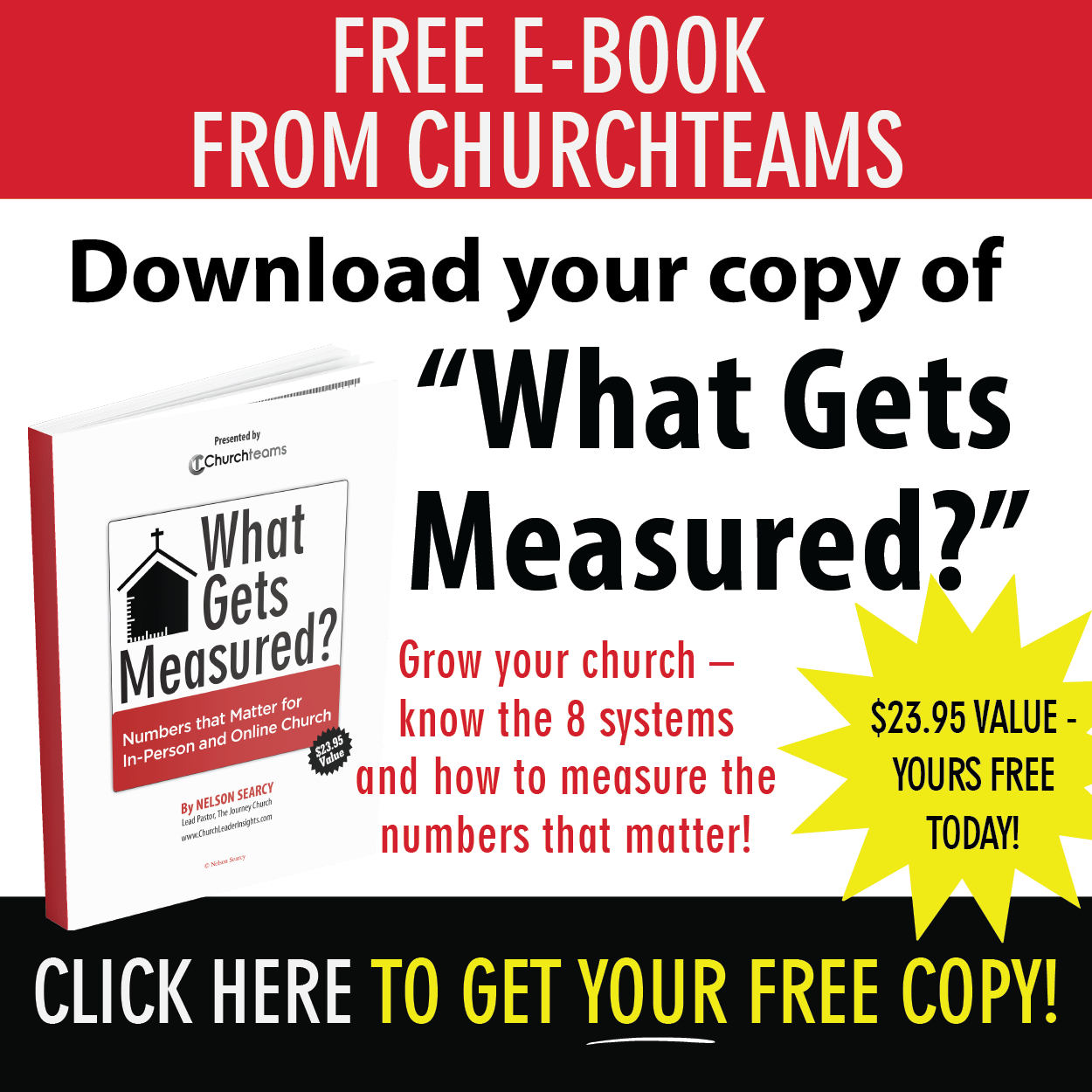 After I left Church staff, I took a break from the life of a highly engaged local ministry volunteer for awhile. I had given it 110% for years and was just plain worn out. We started to going to The Village Church, a big church here in Dallas. It was a 45 minute drive for us, but we loved the worship and preaching, and we loved just coming and then going. I was in a good place with the Lord and Churchteams was growing, but we were just under-engaged in church life for that season. Every church has people like this. In fact, the majority of people that come on Sundays probably fit this category. So, how should a pastor or staff person engage this part of their congregation? There are 4 different reasons people are under-engaged. Each of them require a different approach.
After I left Church staff, I took a break from the life of a highly engaged local ministry volunteer for awhile. I had given it 110% for years and was just plain worn out. We started to going to The Village Church, a big church here in Dallas. It was a 45 minute drive for us, but we loved the worship and preaching, and we loved just coming and then going. I was in a good place with the Lord and Churchteams was growing, but we were just under-engaged in church life for that season. Every church has people like this. In fact, the majority of people that come on Sundays probably fit this category. So, how should a pastor or staff person engage this part of their congregation? There are 4 different reasons people are under-engaged. Each of them require a different approach.First of all there are people in your congregation like I was at The Village that have been worn or burned out by church experiences in the past. They need a place to come to "find rest for their souls" (Matthew 11:28-30). They've not given up on the church and they still love Jesus. They just need a breather for awhile. The best way to engage these people is to identify them. When you meet with them, listen to their story. Assure them that they can have whatever time they need to refuel and restoke the fire. For them "come and see" is about rediscovering their first love and calling. It may also be about healing. For many of these people, a community or recovery group can be a place to bring to light past hurts and find healing.
The second group is on the other side of church-life experience. The idea of being a part of a church is completely new to them. They may have had a childhood experience with church, but that was years ago. They are coming because someone asked them to come and they are curious about church, but especially about Jesus and the Bible. These are the people that Jesus invited to "come and see". They weren't all in yet. They need to build trust in church as an organization and very likely need to trust Jesus to be their forgiver and leader. This is a delicate journey at first. You easily recognize that these people are not comfortable with the environment or message. Like, the first group, they need time. Time, not to rekindle a love for Jesus, but to find one and to deal with the implications of letting Him be the leader of their lives. Help them by getting rid of "insider" church language. Don't water down or ease up on what Jesus said and did, just be clear about it. Clarity and authenticity are really critical for this group. Identify with the concerns and needs that they have. Share with them your struggles with those concerns and with faith. Ask them questions. Give them an opportunity to learn more and ask questions. Maybe through a specific time set aside for asking hard questions or learning the basics about the Bible and faith. These times also help them build relationships that are essential to engagement. And, don't be afraid to extend a call to action from time to time. Help them understand that they too can find freedom and purpose in Christ by trusting Him.
The third group is made up of new people. They might be new to the faith or new to your church. They are different from the first group in that they are not burned or worn out from ministry. They differ from the second group because they are comfortable with church culture and have given their lives to Jesus. Their newness comes with a great deal of energy and excitement. These are people ready to engage. The key for them is to develop and communicate a clear path for engagement. This is where the membership class followed up by classes and opportunities to learn about spiritual growth and serving come in. I always recommend making room for new people to serve as greeters and ushers. Rather than having the same people fill these roles year after year, why not limit these low level serving opportunities to 1 or 2 years. There is nothing like being the person to welcome people to your church to help them feel engaged. Another benefit of this is that they begin to develop relationships with other new greeters and ushers. I've often seen people in first serving opportunities end up starting a small group together. Also, you need to make room for them in your community or Bible Study / Fellowship group ministry. It has been well documented that a group of 8 to 12 is about the capacity for most people to develop close relationships. Larger groups allow for more acquaintance level relationships that help people feel slightly connected, but to really feel connected people need to identify with a group of 8 to 12. The classroom as a group environment is fine for assembly, education, equipping and acquaintance level relationships. So, learn to leverage those as environments to help people get connected in smaller, closer-knit, more accountable relationships.
The fourth group is the people who've been around for years and are comfortable. This may be the toughest group of all to engage because they feel they are already engaged in church life. These are the people who do one or two things for the church, often give and regularly attend. However, challenging them to engage beyond this level of personal comfort to live a life of full authenticity and multiplying impact is really hard. In our culture, there is a certain level of acceptable authenticity and sharing of life. It covers about 80-90% of who we are what we do. But, that last 10-20% deals with character development, living out the one another's of scripture and taking the initiative to invest in other people. This has to be modeled from the top down. Not only is it modeled in word, but those you expect to engage at this level need someone to come alongside and challenge, coach or mentor them. There should be an expectation that each pastor and staff are investing in a handful of people with the specific intent of equipping and releasing them to invest in others who'll train others (2 Timothy 2:2). There are a few churches rediscovering this age-old life on life mentoring process.
So, how can Churchteams as software help you engage people at all four levels? Here are a few ideas:
- Set up your groups and attributes to reflect or even help you define your engagement strategy.
- Use groups to track and communicate with people at certain points of engagement.
- Use notes, follow person and follow up dates in Notes to track interactions and provide follow up accountability.
- Use coach and staff areas to build a multiplying structure.
- Use the email and text features including lists to regularly communicate with people at all levels of engagement.
- Use reports to discover people trending either way in their engagement.
- Use reports and groups to help people use their gifts and ministry interests in the right ministry area. Recruiting.
I cover a lot of this stuff in the membership / assimilation webinar I do each week and am always available to discuss personally as well. There may be no greater or more impactful purpose for a well thought out and developed church software system.



